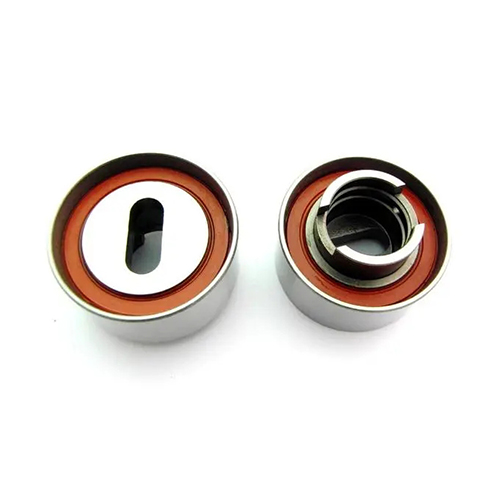
Tensioning wheel is a belt tensioning device used in automotive transmission systems, and is an important component in the front wheel system of automobiles. Due to its long-term operation in the high-temperature environment around the automotive engine, as well as its ability to withstand alternating speeds and significant radial forces, the operation of the tensioner wheel bearing has its unique characteristics compared to general operating conditions. The tension pulley bearing is used to support the mechanical rotating body, reduce the friction coefficient during its movement, ensure its rotation accuracy, and change sliding friction into rolling friction.
1. The main function of the tensioning wheel bearing is to support the mechanical rotating body.
2. Reduce the friction coefficient during its movement and ensure its rotational accuracy.
3. Change sliding friction into rolling friction.
4: Tensioning wheel is a belt tensioning device used in automotive transmission systems. The tensioning wheel mainly consists of a fixed shell, tensioning arm, wheel body, torsion spring, rolling bearing, and spring sleeve. It can automatically adjust the tensioning force according to the different tightness of the belt, making the transmission system stable, safe, and reliable.
5: The function of the tightening wheel is to adjust the tightness of the timing belt. It is usually replaced together with the timing belt to avoid future worries. Other parts do not need to be replaced, as long as regular maintenance is required. The oil must be changed frequently, usually after 4000 to 5000 kilometers.
6: Tensioning wheel bearings are divided into two types: integrated and separated. The integrated type refers to the outer iron frame connected to the inner or outer ring of the bearing, which is simply a bearing. The separated type refers to the outer iron frame with a 6007 or other ordinary ball bearing pressed inside.
7: Bearings are an important component in contemporary mechanical equipment. According to the friction properties of moving components, bearings can be divided into two categories: rolling bearings and sliding bearings. Rolling bearings have been standardized and serialized, but compared to sliding bearings, they have larger radial dimensions, vibration, and noise, and are also more expensive. Tensioning wheel bearings are actually ordinary bearings, but their structure is different.

